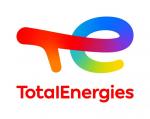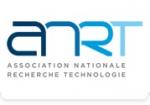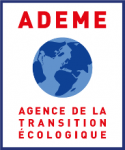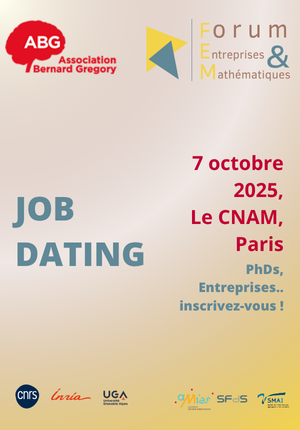Advanced Image Processing for the Study of Photoactivated Sludge in Wastewater Treatment
| ABG-133258 | Master internship | 6 months | 600 euros approx |
| 2025-08-30 |
- Computer science
- Biology
Employer organisation
WORKING CONDITIONS
- The intern will be assigned to the ICube UMR7357 laboratory in Strasbourg at the Manufacture des Tabacs.
- He/she will be supervised by researchers Joseph Lam and Dimitri Klockenbring for the computer science, image processing, and machine learning components (GAIA ICube platform).
- They will be regularly supervised by Vincent Maioli (MCF) for the image processing and microscopy components, and by German Martinez for the process engineering and microalgae components.
- The planned internship duration is six months during the 2025-2026 academic year.
- The internship stipend will be equal to the legal minimum of €4.35/hour, or approximately €600/month.
Description
|
INTRODUCTION
Photoactivated sludge is a consortium of microorganisms such as bacteria, microalgae, and protozoa and represents an alternative to conventional wastewater treatment systems, such as activated sludge. Photoactivated sludge significantly reduces the energy consumption of wastewater treatment processes because the oxygen required for biological decontamination processes is provided by the microalgae via photosynthesis and not by a mechanical aeration system. Furthermore, the algal biomass produced, rich in nutrients, organic matter, nitrogen, and phosphorus, can be used as biofuel or fertilizer. However, despite satisfactory treatment performance, certain biological and physicochemical mechanisms that can lead to a loss of effluent quality are still poorly understood.
The first phase of the BAP-TI-STE project has already been completed. During this phase, a protocol for imaging of photoactivated sludge was developed, and a large number of microscopic (Figure 1A and Figure 2) and macroscopic (Figure 1B) images were produced. These images show more-or-less compact "spots" ranging in size from 0.05 to 2 mm, combining organic matter and bacteria, surrounded by filamentous algae (Figure 1A right) and protozoa (Figure 2). These complex structures are called "flocs." Bacteria can also be observed in these images, dispersed in the media surrounding various flocs.
The second phase of the BAPTISTE project, addressed by this internship offer, aims to improve the processing algorithms to extract as much quantitative information as possible from the images produced in the first phase of the project.
|
|
INTERNSHIP TASKS
The intern will be specifically required to:
|
Profile
REQUIRED PROFILE AND SKILLS
- The ideal candidate should have a background in computer science and image processing, both conventional and AI-based.
- They should demonstrate the ability to work in a team with professionals from diverse scientific fields: process engineering, physics and instrumentation, photonic imaging and microbiology.
- Candidates with a microbiology background may be considered if they have previously acquired in-depth knowledge of programming languages, image processing, and machine learning.
Proficiency in English communication is essential.
Starting date
Vous avez déjà un compte ?
Nouvel utilisateur ?
Get ABG’s monthly newsletters including news, job offers, grants & fellowships and a selection of relevant events…
Discover our members
 Nokia Bell Labs France
Nokia Bell Labs France  Laboratoire National de Métrologie et d'Essais - LNE
Laboratoire National de Métrologie et d'Essais - LNE  ASNR - Autorité de sûreté nucléaire et de radioprotection - Siège
ASNR - Autorité de sûreté nucléaire et de radioprotection - Siège  Tecknowmetrix
Tecknowmetrix  SUEZ
SUEZ  ONERA - The French Aerospace Lab
ONERA - The French Aerospace Lab  CASDEN
CASDEN  Institut Sup'biotech de Paris
Institut Sup'biotech de Paris  Aérocentre, Pôle d'excellence régional
Aérocentre, Pôle d'excellence régional  TotalEnergies
TotalEnergies  ANRT
ANRT  MabDesign
MabDesign  ADEME
ADEME  Groupe AFNOR - Association française de normalisation
Groupe AFNOR - Association française de normalisation  MabDesign
MabDesign  Ifremer
Ifremer  Généthon
Généthon  CESI
CESI  PhDOOC
PhDOOC



 This internship will be developed as part of the BAP-TI-STE project, an French acronym for Bacteria-Algae-Protozoa, Image Processing for the Wastewater Treatment Plant. The objective of this project is to gain a better understanding of the sedimentation and nitrogen and phosphorus assimilation processes in photoactivated sludge through qualitative, and quantitative visual characterization of the microorganisms present in the sludge. This characterization is a research topic that we will address using optical imaging (macro and microscopic) coupled with image processing, which will utilize machine learning concepts.
This internship will be developed as part of the BAP-TI-STE project, an French acronym for Bacteria-Algae-Protozoa, Image Processing for the Wastewater Treatment Plant. The objective of this project is to gain a better understanding of the sedimentation and nitrogen and phosphorus assimilation processes in photoactivated sludge through qualitative, and quantitative visual characterization of the microorganisms present in the sludge. This characterization is a research topic that we will address using optical imaging (macro and microscopic) coupled with image processing, which will utilize machine learning concepts. The images are of sufficient quality to be subject to automatic processing. Images such as those in Figure 1B have already been analyzed using conventional image processing methods: binarization, morphological analysis, size, shape, and counting. However, these methods can have certain limitations, particularly when identifying microorganism species and characterizing complex morphologies.
The images are of sufficient quality to be subject to automatic processing. Images such as those in Figure 1B have already been analyzed using conventional image processing methods: binarization, morphological analysis, size, shape, and counting. However, these methods can have certain limitations, particularly when identifying microorganism species and characterizing complex morphologies.